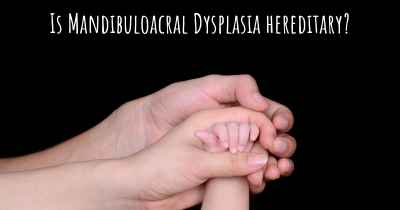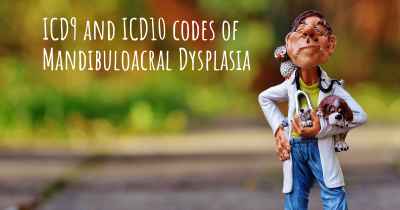What are the best treatments for Mandibuloacral Dysplasia?
See the best treatments for Mandibuloacral Dysplasia here

Mandibuloacral Dysplasia (MAD) is a rare genetic disorder that affects the development of bones, skin, and other tissues. It is characterized by skeletal abnormalities, such as underdeveloped jawbone (mandible) and collarbones (clavicles), as well as skin changes, including thinning, tightness, and abnormal pigmentation. While there is no cure for MAD, there are various treatments available to manage the symptoms and improve the quality of life for individuals with this condition.
Orthopedic interventions: As MAD primarily affects the skeletal system, orthopedic treatments play a crucial role in managing the associated complications. Surgical procedures, such as jawbone reconstruction or clavicle stabilization, may be recommended to improve facial structure and enhance mobility. Physical therapy and regular exercise can also help maintain joint flexibility and prevent contractures.
Dermatological care: The skin manifestations in MAD require specialized dermatological care. Regular moisturization is essential to alleviate dryness and prevent skin cracking. Emollients and topical corticosteroids may be prescribed to manage skin tightness and reduce inflammation. Additionally, individuals with MAD should avoid excessive sun exposure and use sunscreens to protect their skin from harmful UV rays.
Cardiovascular monitoring: MAD can be associated with cardiovascular complications, including heart valve abnormalities and high blood pressure. Regular cardiac evaluations, such as echocardiograms and blood pressure monitoring, are important to detect and manage any potential cardiovascular issues. Medications may be prescribed to control blood pressure and prevent further complications.
Genetic counseling: Since MAD is a genetic disorder, genetic counseling is crucial for affected individuals and their families. Genetic counselors can provide information about the inheritance pattern, recurrence risks, and available prenatal testing options for future pregnancies. This can help individuals make informed decisions regarding family planning and understand the implications of the condition.
Supportive therapies: MAD can have a significant impact on an individual's overall well-being. Therefore, supportive therapies, such as occupational therapy and speech therapy, can be beneficial in improving daily functioning and communication skills. These therapies focus on enhancing fine motor skills, speech articulation, and social interactions.
Psychological support: Living with a rare genetic disorder like MAD can be emotionally challenging for both affected individuals and their families. Therefore, psychological support in the form of counseling or support groups can be invaluable. These resources provide a safe space to discuss concerns, share experiences, and receive emotional support from others facing similar challenges.
Research and clinical trials: Ongoing research and clinical trials are essential for advancing our understanding of MAD and developing potential treatments. Individuals with MAD may consider participating in clinical trials to contribute to scientific knowledge and potentially access novel therapies that are being investigated.
In conclusion, while there is no cure for Mandibuloacral Dysplasia, a multidisciplinary approach involving orthopedic interventions, dermatological care, cardiovascular monitoring, genetic counseling, supportive therapies, psychological support, and participation in research and clinical trials can help manage the symptoms and improve the overall well-being of individuals with this condition.








